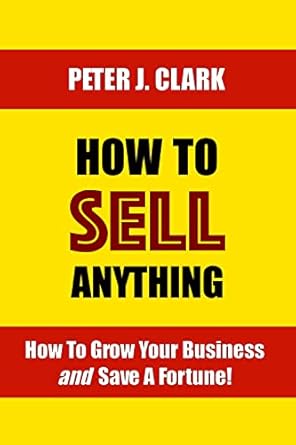Associates are the key to Supermarket Loyalty
The Retail Feedback Group (RFG) has released the 2015 U.S. Supermarket Experience Study. The research, now in its eighth year, found that supermarkets continue to generate high satisfaction among their shoppers, scoring an average of 4.44 on a five-point scale, where five is highest.
Shoppers who felt like a welcome guest (4.70), believed that store employees had food expertise (4.66), or encountered exceptional service (4.66) handed out the highest overall trip satisfaction scores. All three show the significant impact that store associates can have on shopper satisfaction.
Additionally, several retailing fundamentals can greatly impact the overall trip experience and store satisfaction. Supermarkets performed well in some of these areas yet show room for improvement in others.
Quality/Cleanliness: Supermarket shoppers rated quality/freshness of the food and groceries (4.47) followed by cleanliness of the store (4.44) as the two highest-rated core experience factors.
Service: While shoppers gave high marks to the friendliness and attitude of the store personnel (4.43) and the speed and efficiency of checkout (4.41), helpfulness and knowledge of personnel (4.35) realised a lower rating and availability of personnel to provide assistance if needed (4.26) received the lowest rating across all core experience factors.
Value: The value for the money spent on this visit received the second lowest rating at 4.27.
Variety: A mid-tier core experience factor was variety and selection of products, at 4.38.
Doug Madenberg, RFG Principal noted, "Our findings show that two of the three lowest-rated areas among the core experience factors are people-related - helpfulness and knowledge of personnel and the availability of personnel to provide assistance. It is important to strengthen these areas, especially considering how store associates can positively influence overall satisfaction."
Nothing detracts from a good experience at the supermarket more than unsanitary conditions, according to 69% of shoppers who say a dirty store really gets on their nerves. Two-thirds are highly irritated by unsanitary carts and baskets. At 64%, discourteous employees follow in third place. Second-tier irritants are inaccurate price scans (44%) and an unpleasant odor in the seafood department (44%).
Considering all the ways in which consumers might interact with their primary supermarket using digital technology, at most half actually do so. The most common way is to check the digital circular (43%), followed by building online grocery lists (36%) and researching special online promotions (34%). Online services such as ordering groceries, reading blogs and getting nutritional advice receive little uptake across the entire population, but are distinctly more popular among Millennials, as are building digital grocery lists and researching special online promotions.
Supermarket shoppers continue to be highly engaged with social media. While the total share using one or more social media vehicles with at least some regularity remained flat at 83%, shoppers increased their usage across vehicles over the past year: from an average of 2.9 different platforms in 2014 to 3.3 in 2015.
Up from 26% in 2014, 31% of supermarket shoppers are connected to their primary store on one or more social media platforms.
Compared with the 83% who use social media, this still represents an opportunity gap of 52%. While down from 59% last year, working on closing the gap continues to be important for food retailers in the face of ever-growing competition and diminishing store and brand loyalty.
Further, the influence of grocery shoppers' social media circle on food-related choices is growing - particularly the willingness to try new restaurants based on social media recommendations that jumped from 34% in 2013 to 51% this year (percent "very willing") or to make a recipe or meal not cooked before (50%, up from 40% in 2013).
Brian Numainville, RFG Principal, commented, "Shoppers are changing the ways in which they interact with the supermarket pre-trip to increasingly include technology and social media. This is especially true for the Millennial shopper. As this Millennial shopper base grows in numbers; older generations become more comfortable with technology; and retailers improve and amplify their digital offerings, the adoption speed of using technology and social media when interacting with supermarkets will only accelerate."
Survey respondents who had shopped for groceries online reported varying levels of satisfaction, all of which were lower than satisfaction with the in-store visit. The average satisfaction for online ordering from general/specialty food websites (4.38) fell only slightly below overall in-store supermarket shopping satisfaction (4.44). Pure-play online shopping ended up somewhat lower (4.30). Traditional grocers offering delivery (4.15) or in-store pickup (4.14) had much lower average satisfaction.
As the economy is recovering, some shoppers are starting to abandon money-saving practices - both measured in the share of shoppers using some form of money saving measure and the number of ways in which people look to save money. However, overall, money saving measures remain prevalent, used by 76% of shoppers. The top money-saving behavior, employed by 70% of shoppers, is reviewing the traditional paper circular at home or in the store. An additional 16% review the circular electronically. Clipping paper coupons (obtained from newspapers or other printed sources) is the second most popular money-saving measure at 25%, down from 32%.
Additionally, 14% downloaded digital coupons. The use of special (unadvertised) sales promotions offered in the store continue to drop from 28% in 2013 to 17% last year and 14% in 2015.
Sources: The Retail Feedback Group / The Marketing Factbook.
Copyright © 2015 - 2025 The Marketing Factbook.
Categorised as:
- Customer Experience
- Customer Loyalty
- Knowing The Customer
- Marketing Know-How
- Marketing Technology
